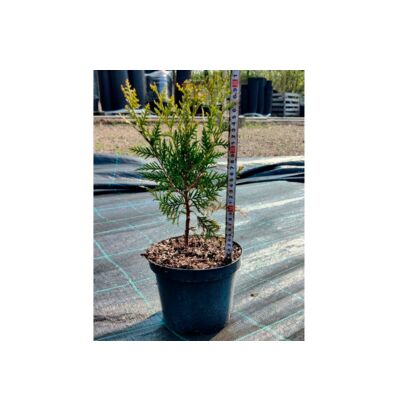Thuja western Brabant (Brabant)
Crown: conical
Needles: light green, dense
Frost resistance: high, – 35°C
Zoning: continental climate
Origin: The Netherlands
Thuja western Brabant (Brabant) – evergreen upright shrub, bred in the Netherlands in the early 80s by breeder H. J. Van de Laar.
Dignity of the variety: decorative, unpretentious, frost-resistant.
Appearance. In decorative plantings and the urban environment of most Russian regions, the bush grows up to 4-5 meters. At home, in the natural environment and with a favorable climate, the height of the thuja can reach 20 m. The growth rate – by 30-40 cm per year.
The root system – extensive, located close to the ground, horizontal to the ground surface. Crown – thick, regular conical shape. Branches – located tightly, close the trunk almost to the ground. Bark – grey, peeling off. Needles – light green color, does not change all year round. Cones – small (up to 1 cm in length), oblong, brown. Appear on the thuja in the middle of spring.
Destination. Thuja Brabant varieties in landscape design are used for both single and group plantings, as well as a bright accent, in combination with other ornamental plants – conifers, flowers, cereals.
From several thujas planted nearby, an original and dense hedge is obtained, reliably protecting the owners of the site from prying eyes and winds. Thanks to the ability of coniferous plants to purify and heal the air around, with the help of thuja, you can create secluded resting places that have a beneficial effect on human health.
Growing conditions. The thuja variety Brabant is picky about soil composition, hardy, tolerates temperature extremes and frosts up to –35°C. Most of all, 2-4 climatic zones are suitable for a tree.
Beware of fakes and infected planting material, purchase thuja Brabant seedlings in specialized nurseries.
